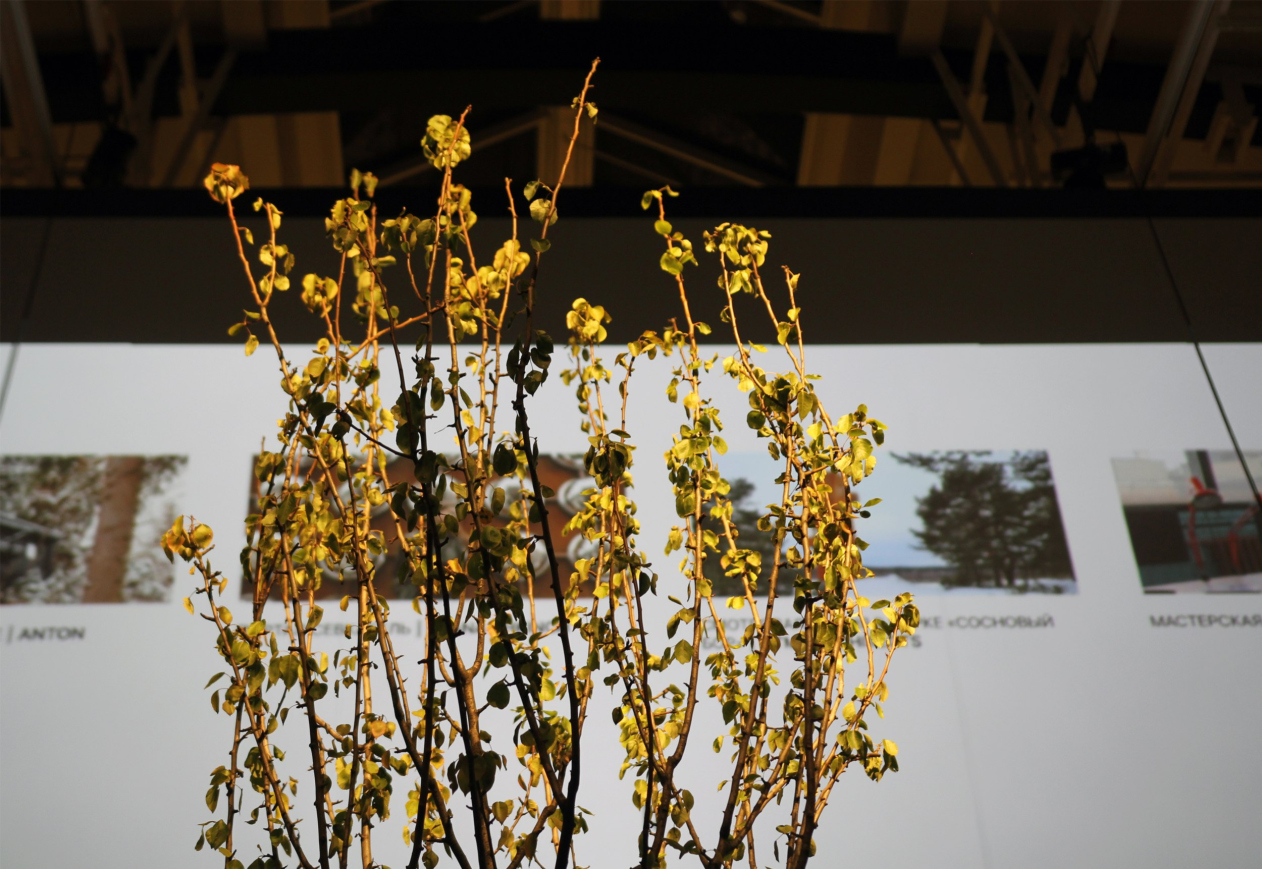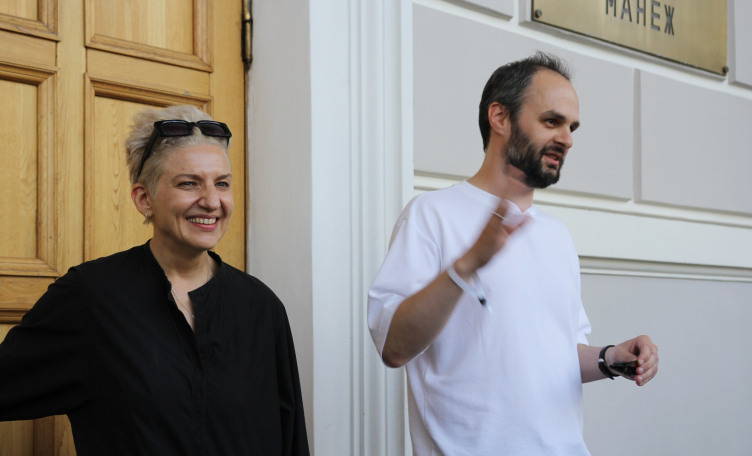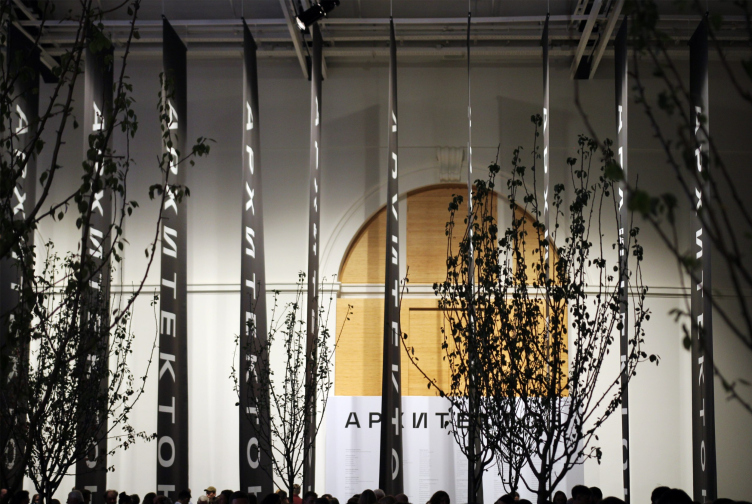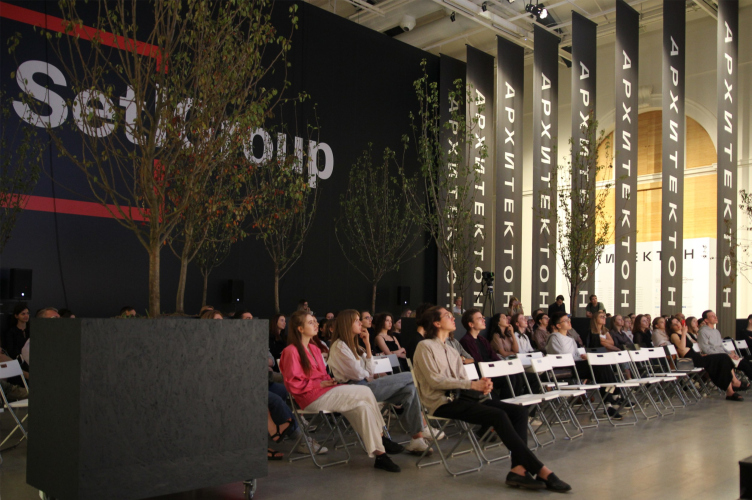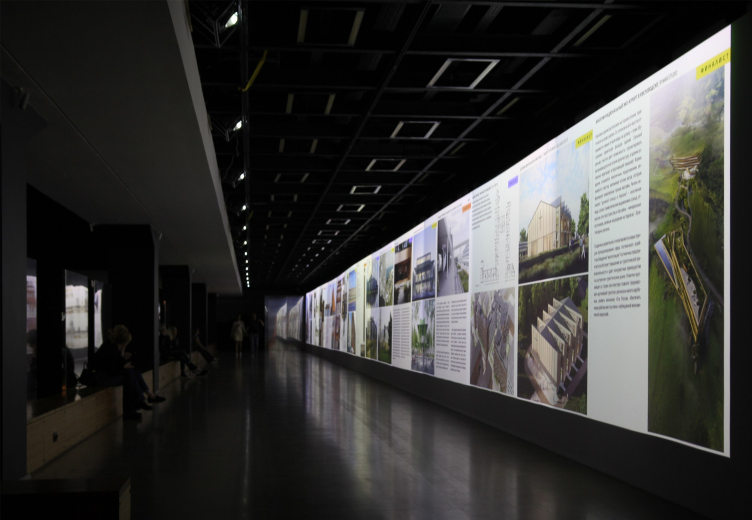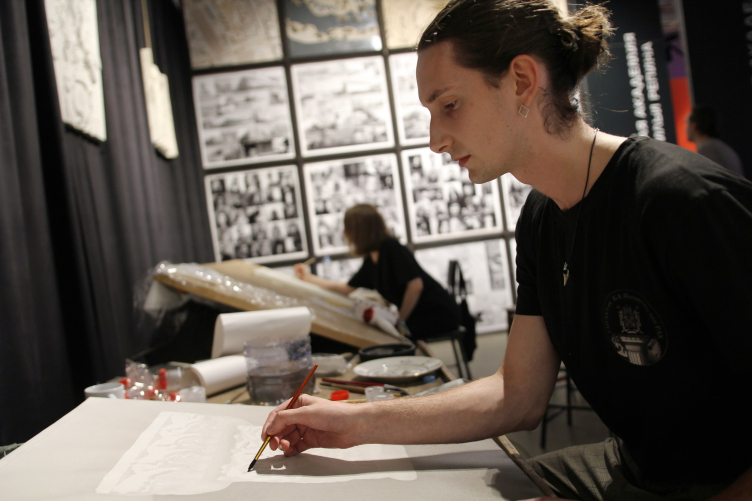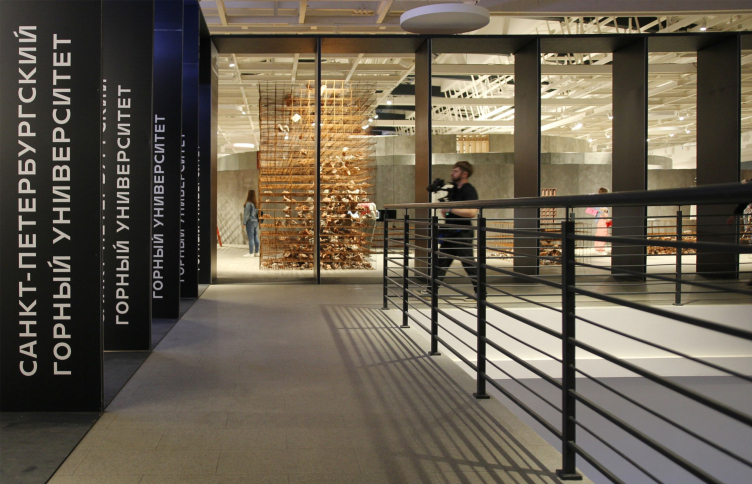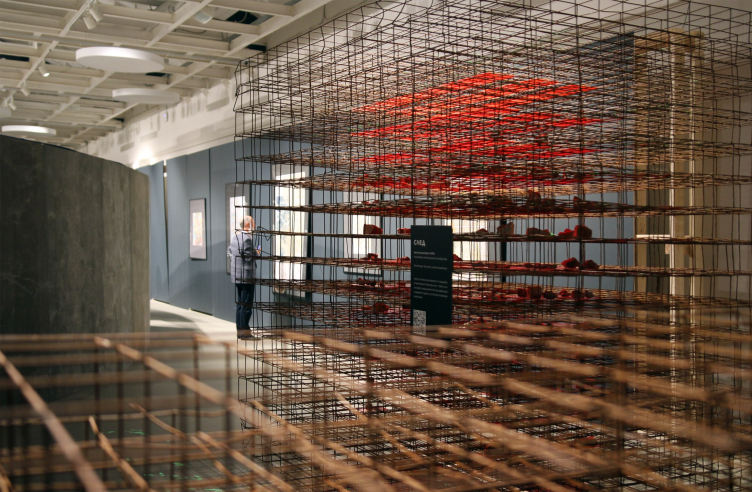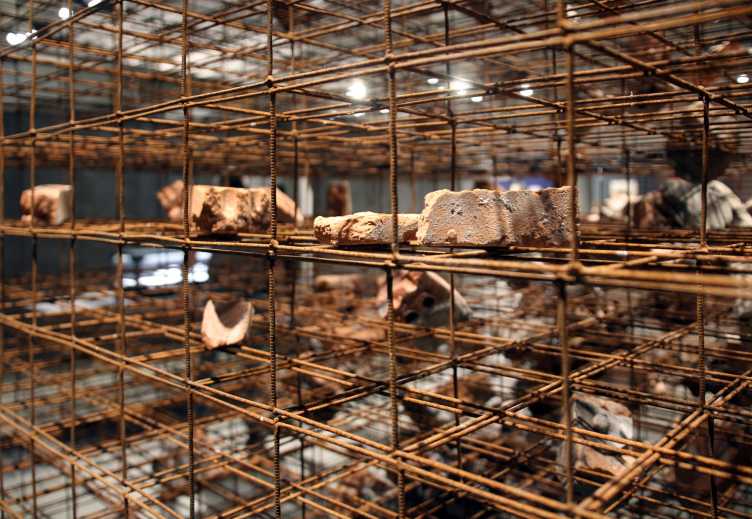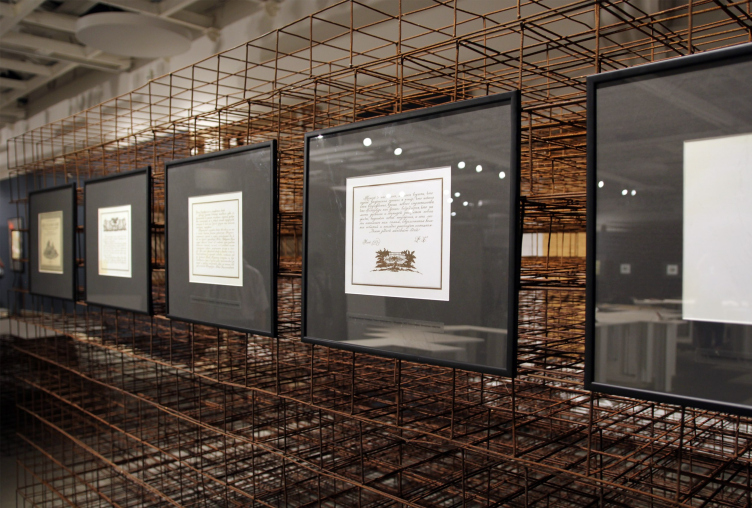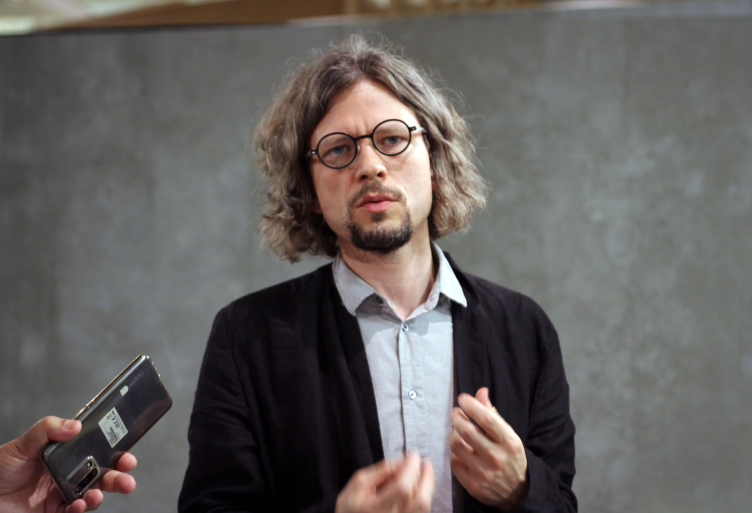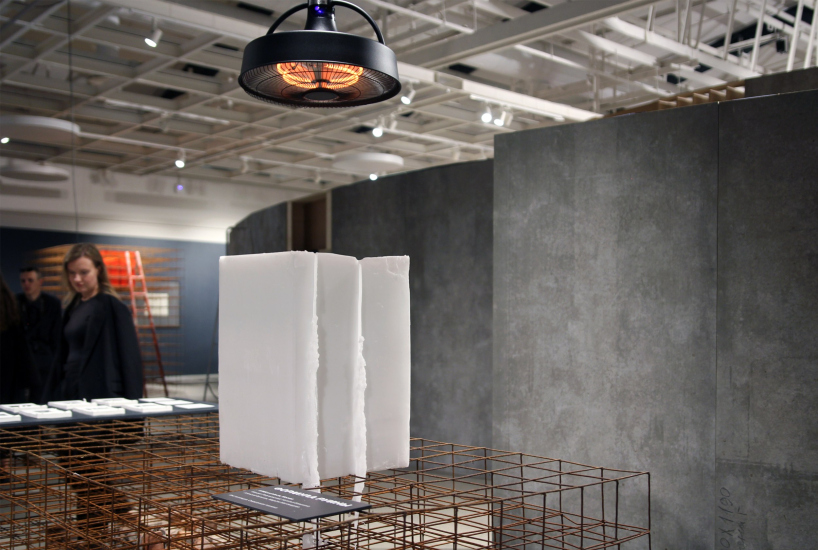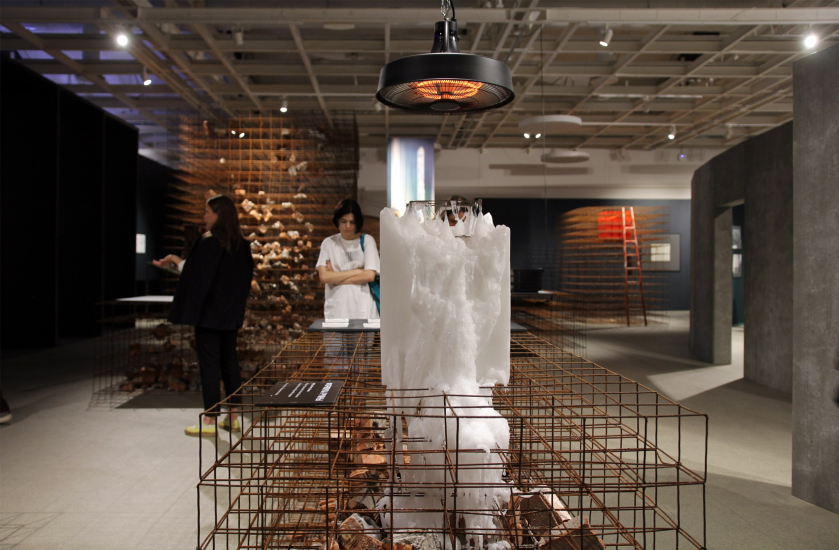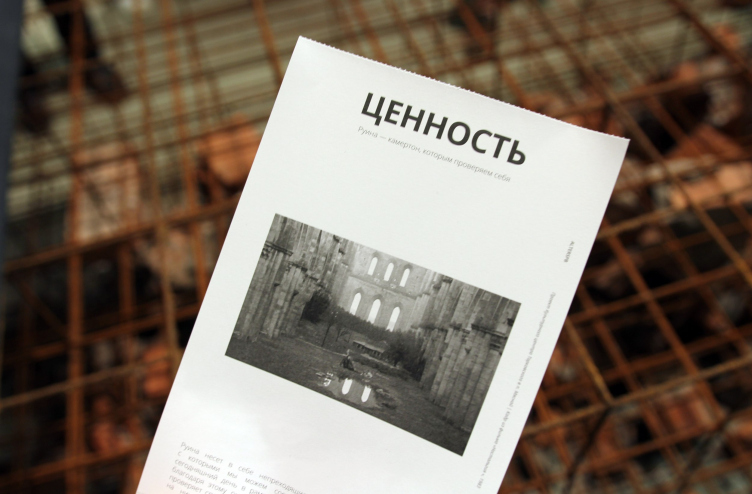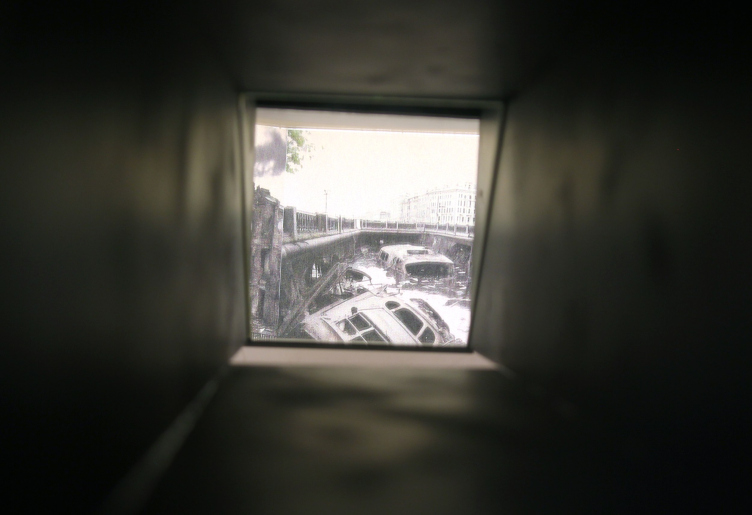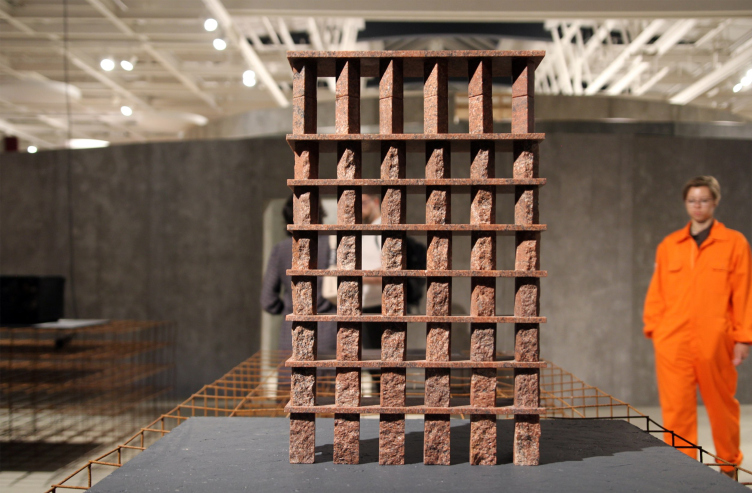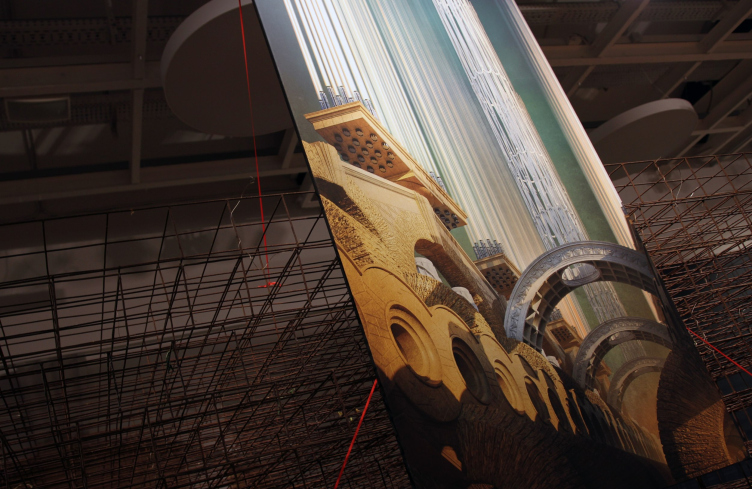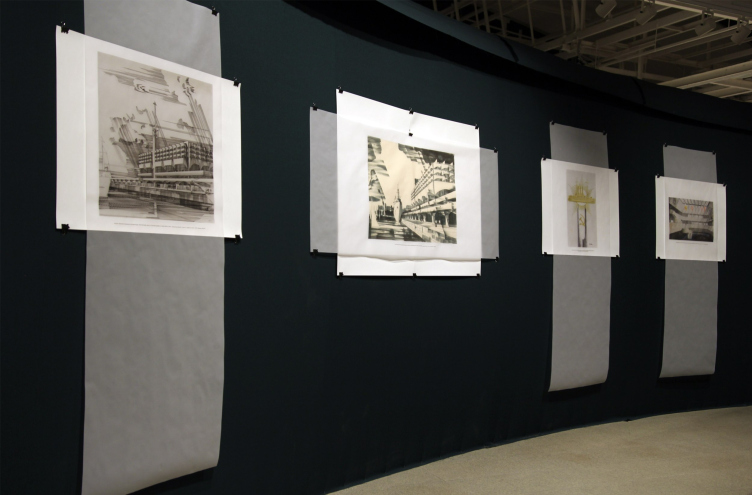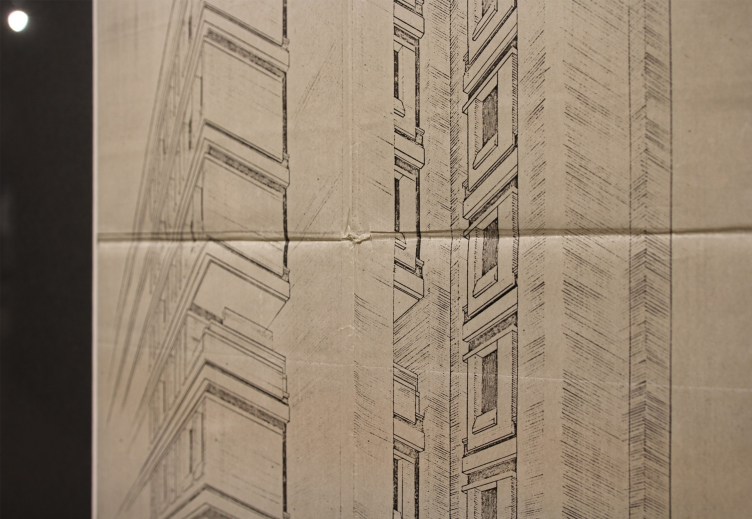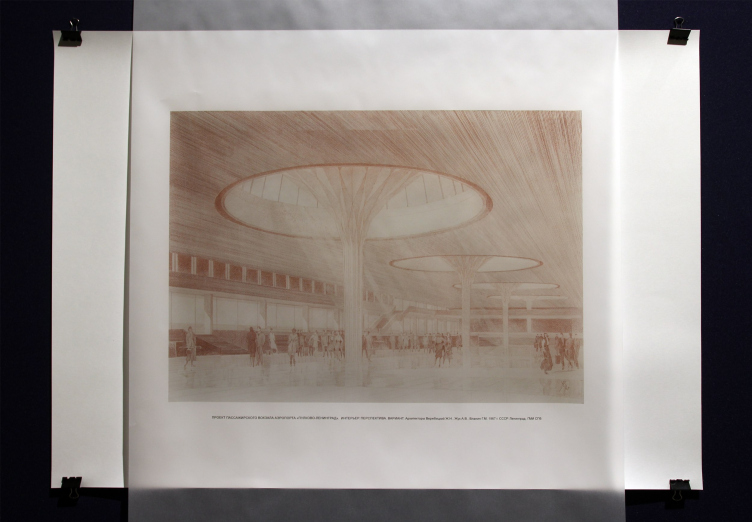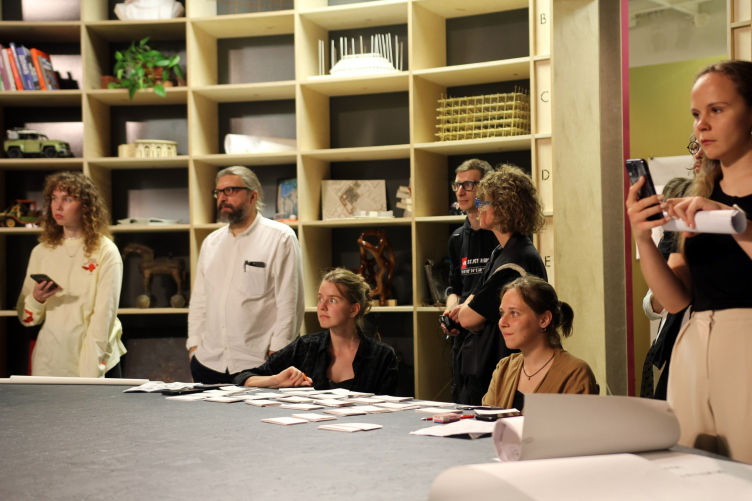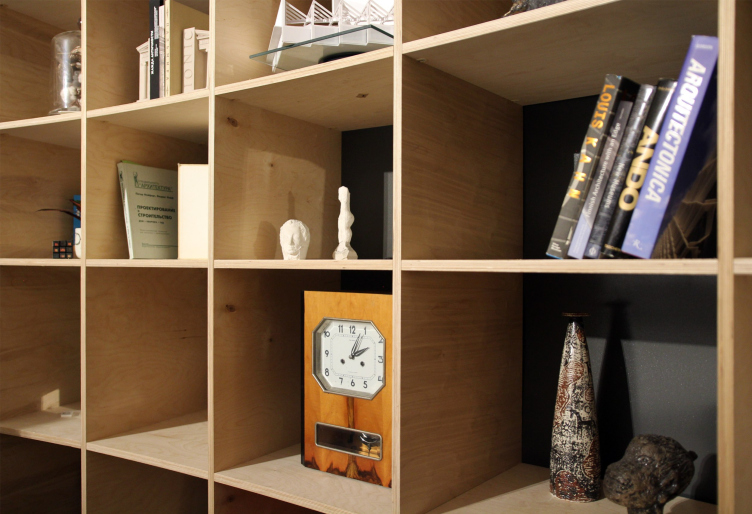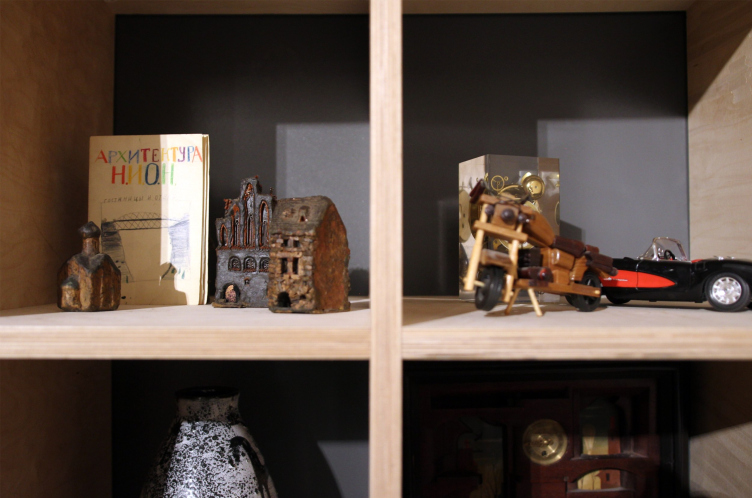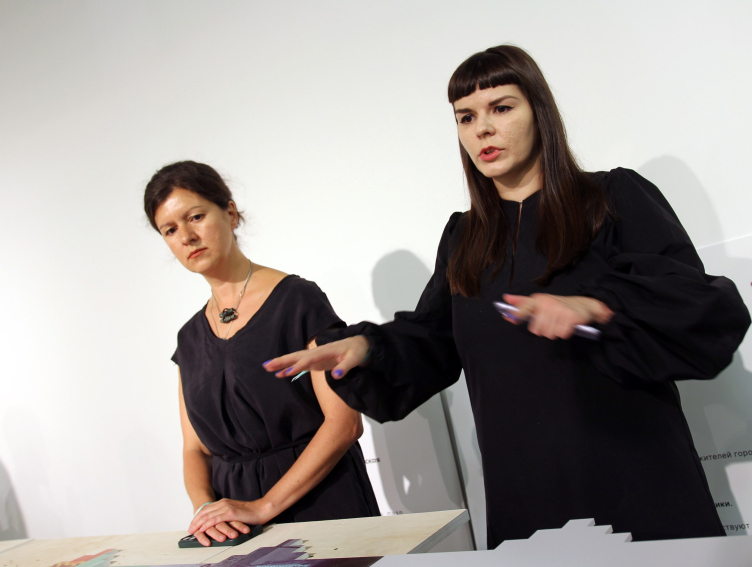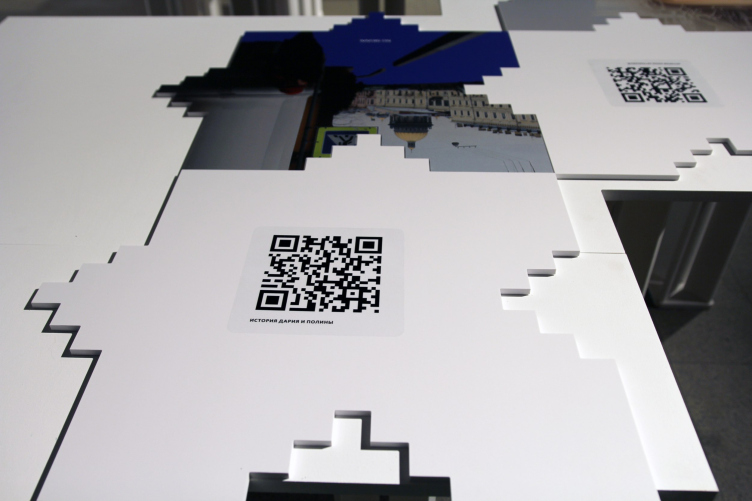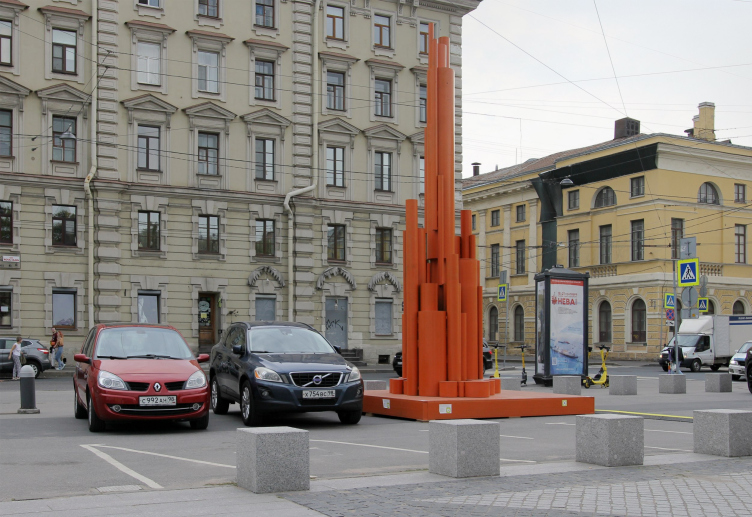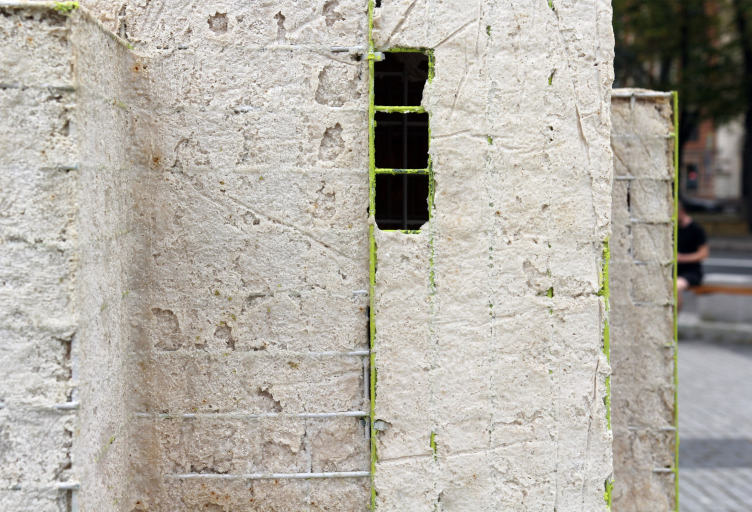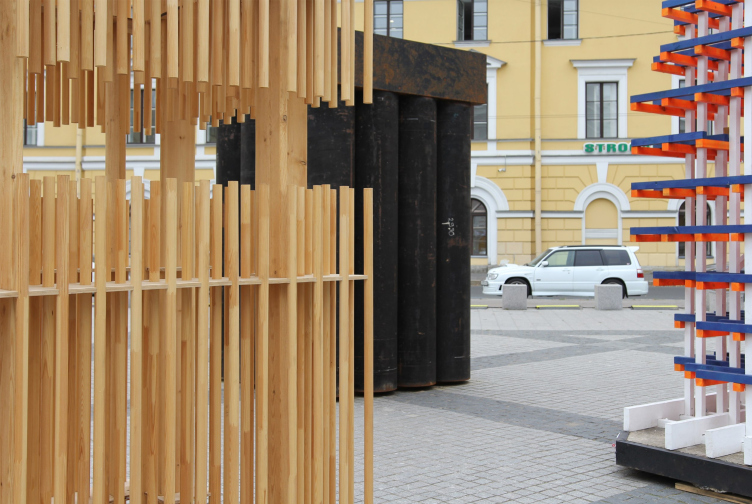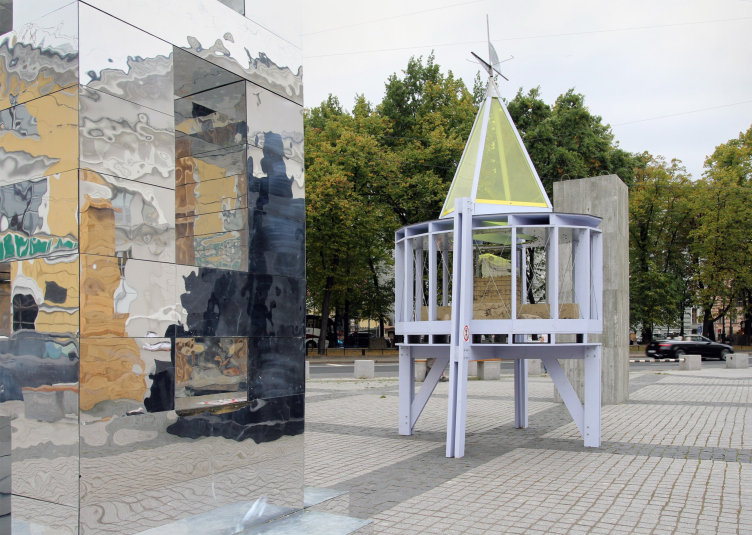And yet you incessantly stand on your head —
Do you think, at your age, it is right?
Alice in Wonderland
Do you think, at your age, it is right?
Alice in Wonderland
I would like to start with the fact that this year Malevich’s architectons are ostensibly celebrating their 100th anniversary, but dating is a delicate thing – within a minute of quick Google search we managed to find 1923 as the date of appearance of his first architecton “Alpha”, then 1920 popped up, and then 1925 was named as the year when Malevich’s architectons became widely popular. There is also an opinion that Malevich began to make architectons even earlier, but invented the word for them only in 1923. That is, we do not know for a fact that we have an anniversary now, but the search itself makes us remember that we live in the period of the century of avant-garde works in general. What does it mean? Yes, it’s time to reinvent ourselves and shake things up. At any rate, the 100th anniversary of the freshest and boldest artistic movement of the past century should be neither excessively pompous nor embarrassingly dusty.
The word “architecton” has yet another meaning, by the way: it is how Pietro Antonio Solari, who built the towers of the Moscow Kremlin when St. Petersburg did not even exist, was called in the chronicles of the late 15th century – essentially, this term meant “architect”. Only Daedalus is more ancient, but he is really hard to compete with. If we mix all these meanings into one, we will get: Russian avant-garde, plus something ancient, plus an Italian architect, and some kind of global Renaissance spirit. Confused? Yes, it’s a lot of things, and it’s hard to live up to all of them at once.
Maybe because of that, or maybe for some other reason, St. Petersburg’s festival “Architecton”, which was founded back in 2001 by the Union of Architects, kept a low profile for a long time, existing rather as a humble professional award, in the form of arrays of sketch boards and professional diplomas. Then there was a couple of years’ hiatus in its existence.
This year, Architecton announced a “reboot”, brought in a new team and settled for five days in the Manege Central Exhibition Hall, one of St. Petersburg’s main exhibition venues, relatively recently renovated – it is known for attracting trendy exhibitions, including those of contemporary art.
Architecton 2023 festival, St. Petersburg
Copyright: Photograph © Julia Tarabarina, Archi.ru
The Architecton festival has been relaunched bigtime, i.e. instead of a couple of rows of sketch boards, it has turned into a very atmospheric exhibition, the main role in which is given to art objects made by young architects and emerging architectural studios, as well as to the interior designed by Sergey Padalko, who is well known as a master of exposition design – among other things, he worked on the Studio 44 exhibition in the Joint Staff building.
Both of these two circumstances helped to design the whole exhibition in “big strokes”, a la prima, and to relieve the tension from the excess of information, which usually imbues professional shows. Such an exposition makes you want to interpret it, and we, as always, will not deny ourselves this pleasure.
At the entrance, we are greeted by the main auditorium, where chairs are placed between tubs of pear trees – after the exhibition, it is planned to build a boulevard next to the building of the Union, and maybe even to present some of the trees to the winners of the competition. One of the things that immediately come to mind are the linden trees in one of the halls of the Hermitage exhibition by “Studio 44”.
Architecton 2023 festival, St. Petersburg
Copyright: Photograph © Julia Tarabarina, Archi.ru
Architecton 2023 festival, St. Petersburg
Copyright: Photograph © Julia Tarabarina, Archi.ru
Not to forget: all the volunteers working at the exhibition were dressed up in orange “convict” overalls.
Architecton 2023 festival, St. Petersburg
Copyright: Photograph © Julia Tarabarina, Archi.ru
As you walk further, the Manege space becomes two-tiered, and the first floor has three aisles in it. It was dark in the central aisle, where sixteen identical black boxes with perspective sockets were installed – and sixteen videos from St. Petersburg’s top architectural companies were played there. We will stress again that all the boxes are exactly the same, the names are signed under your feet and they are almost invisible, so solely by watching the video you can understand who is in front of you. The most successful ones perform in an even line. There were rumors that of those architects who could afford to participate in the exhibition with a personal stand, only Evgeny Gerasimov studio was not showcased here.
The two side aisles were much brighter; in them, the works of the contestants, finalists and winners were projected on the wall: the first ones were shown in a small volume and sort of in a fast-forward tempo, while the grand prize video occupied almost the whole wall. It was really large – noticeably larger than the maestros’ in the boxes. And by the way, you had to stand in front of the boxes, but you could sit in front of the prize ribbon.
Architecton 2023 festival, St. Petersburg
Copyright: Photograph © Julia Tarabarina, Archi.ru
There’s an unexpected humility of the maestros in all of this. They can afford it. Or it could go like this: we often show the “top league” large and first, while the participants of the show are shown rather as a mass – which also has a meaningful connotation. The new Architecton has turned everything upside down – however, it should be said that this seems to be the main message and the main task of its organizers: to do everything the other way around, not the way it’s supposed to be done.
So! The new Architecton turned everything upside down: it highlighted the “minors” and it placed the majors in the shadows, arranging them in a kind of military array. At the same time, there is another interesting point to consider: the works of maestros, both mid-market and bright and interesting, all of them, all this activity of successful architectural companies, showcased at the exhibition, looks like a substrate, a certain cultural and economic base – but at the same time also a central axis, a spine, or even a tree trunk – on which the prize winners “grow up” – a very metaphorical thing.
The only annoying thing here is that the pictures of video presentations keep flying away and being replaced by others. Not that they change very quickly, but they fly away at the most inconvenient moment, and you have to wait for them to reappear. What’s worse, I’ve got no constructive suggestions on how to solve this problem of video projections, because even if we program the possibility of its control by the visitors of the exhibition, different people will want to change the picture at different times. However, it is absolutely correct that the projection should occupy the entire wall.
We will also cover the subject of the award very early on. Here, too, everything is very different. In the past, many diplomas were awarded at this exhibition – now their number is limited to four: for the construction and design of a public function and housing. The organizers used to be the judging panel as well – now they invited Moscow architects (and a few of us, writers/publishers) to be on the jury. The awards were given not on the last day of the festival, but at the very beginning, even before the grand opening, which I think was a very good idea, since during all the five days of the exhibition you could examine a large volume of projects pronounced by the jury to be the best.
We have already told you about one of the winning projects; we will cover others separately; here we will only list them, and it must be said that the editorial staff’s choice coincided with the judging panel’s choice – we liked the winning projects, which is definitely a plus. However, the rumor has it that some of St. Petersburg architects, on the contrary, were surprised by this choice. And once again, everything here is the other way around.
- Public building: Igora. “Vremena Goda” (“The Four Seasons”) by RHIZOME
- Public project – Museum complex in the town of Vyksa by Studio 44
- Residential construction – Villa Peterhof by Golovin & Shreter Architectural Studio
- Residential project – WarmStone Residential Complex by MAYAK architects.
On the balcony of the second floor, the volumetric boxes housed St. Petersburg’s architectural schools, and at least two of them chose to offer an interactive experience: in the space of the Higher School of Economics, they were constantly conducting and filming some kind of interviews or master classes under the spotlights, while across from it, the Academy was doing a tinting job, inviting the visitors to participate. They say that no one can do the tinting as brilliantly as they do in the Academy, and most of the students don’t even learn this skill nowadays, but the other surprising thing is that tinting can also be used to make an interactive session – the classical approach is more alive than anything else. That’s how they worked, opposite each other – a technology-based interactive session and the one with tradition.
Architecton 2023 festival, St. Petersburg
Copyright: Photograph © Julia Tarabarina, Archi.ru
However, as was already said, the main emotional content – which is the key part of any exposition, as it is the basis for communication with the visitor – were the art objects and the design of the exhibition space.
On the second floor, Sergey Padalko designed the double-height space as a colonnade, echoing the external periptera of Quarenghi, but with black lamellae referring, of course, rather to Malevich. However, for a Muscovite, the passage to the hall of the curators’ projects between the thin lamellae will sooner remind of a similar structure on the second floor of the Central House of Artists, where Arch Moscow was held for a long time.
Architecton 2023 festival, St. Petersburg
Copyright: Photograph © Julia Tarabarina, Archi.ru
In the curatorial hall, there were metal grids – another favorite technique of Sergey Padalko’s, also used by him at the exhibition in the Joined Staff building, only there they had been light aluminum, and here they were rusted, because they belonged to the curatorial project of Vladimir Frolov’s named “Ruina” – but then again, it turned out that the grids “covered” the entire hall, and we bump into them everywhere.
Architecton 2023 festival, St. Petersburg
Copyright: Photograph © Julia Tarabarina, Archi.ru
I feel like criticizing a bit here. Both metal grids and trees are effective and productive techniques, but they are all too recognizable. For the people of St. Petersburg they have probably become commonplace, and a Muscovite’s eye immediately recognizes the similarity with the Studio 44 exhibition in the Joint Staff building, and starts regarding this exhibition as a continuation of that one. Well, the metal has rusted a little because it’s been three years now. Although, of course, it is impossible to say that the techniques are literally repeated – but we so rarely put trees in the exhibition hall that it is not difficult to guess the tune.
But then again, the grids are a great help in organizing the space, as they delineate it along three axes, allowing you to feel three-dimensionality, yet they also noticeably “freeze” the space, as in the movies, when the frame of the flow of time is stopped. This is captured and emphasized here: broken bricks were placed in the grids, thus making them “freeze” in space. In short, the grids were perceived as a kind of spatial clots, or condensations – a rather curious effect, after all.
Architecton 2023 festival, St. Petersburg
Copyright: Photograph © Julia Tarabarina, Archi.ru
On the grids, Vladimir Frolov hung sheets from a series of prints by Pavel Shillingovsky, “Petersburg. Ruins and Revival” – this extremely curious publication combines the stylistics and passéisme of the “World of Art” with documentation of the revolutionary destruction of the capital of the empire. This year’s edition turns 100 years old – yet another anniversary. The curator calls the engravings the starting point of the “Ruina” project.
Architecton 2023 festival, St. Petersburg
Copyright: Photograph © Julia Tarabarina, Archi.ru
Architecton 2023 festival, St. Petersburg
Copyright: Photograph © Julia Tarabarina, Archi.ru
The main part of Ruin is “meditation” objects. They are essentially subdivided into two parts: some of them melt before your eyes, visualizing the beauty of decay and random forms that emerge – a paraffin bar by APRELarchitects, which grows its own “roots” of sweat, exposing the framework; the icy Kirov DK by TOBE; the red cube of Vitruvius, from which sand is falling, and even the “Kit Box” by Chorus Architects, in which melting was not originally designed, but still took place through the efforts of visitors who plucked pieces from the contents of the boxes. Even the pillar of salt, an homage to Lot’s wife, among the objects outside, can be categorized as melting.
Architecton 2023 festival, St. Petersburg
Copyright: Photograph © Julia Tarabarina, Archi.ru
Architecton 2023 festival, St. Petersburg
Copyright: Photograph © Julia Tarabarina, Archi.ru
There are also steady objects, arrested in various positions. It’s the graphics by Stepan Liphart engaged in a dialog with Cameron, the granite facade by KATARSIS, and Ivan Kozhin’s periscope that shows a ruined St. Petersburg, generated by neural networks.
Architecton 2023 festival, St. Petersburg
Copyright: Photograph © Julia Tarabarina, Archi.ru
Architecton 2023 festival, St. Petersburg
Copyright: Photograph © Julia Tarabarina, Archi.ru
Architecton 2023 festival, St. Petersburg
Copyright: Photograph © Julia Tarabarina, Archi.ru
Architecton 2023 festival, St. Petersburg
Copyright: Photograph © Julia Tarabarina, Archi.ru
In the middle of the hall, the “hovering” perspective views of the ruins were countered by a round cylindrical volume of the exhibition-within-exhibition named “The Leningrad School” by curator Andrey Larionov, dedicated to the period of modernism. Several turns of incremental “shells” featured mixed stories about individual masters, some of whom are alive and working, as well as about the city’s key buildings and trends. Graphics prevailed, surprisingly varied in style, mostly copies, but having the original to look at is not really important in such cases; photographs complemented the tape, bringing the viewers back to reality, and black-and-white videos took viewers back to the realm of dreams. The texts written by Larionov were a pleasant surprise: succinct and precise.
Architecton 2023 festival, St. Petersburg
Copyright: Photograph © Julia Tarabarina, Archi.ru
Architecton 2023 festival, St. Petersburg
Copyright: Photograph © Julia Tarabarina, Archi.ru
Architecton 2023 festival, St. Petersburg
Copyright: Photograph © Julia Tarabarina, Archi.ru
Architecton 2023 festival, St. Petersburg
Copyright: Photograph © Julia Tarabarina, Archi.ru
Inside the “shells” of the Modernism exhibition was the “Architect’s Study” – this is how the organizers gradually moved from the past (The Ruin and Modernism) to the present. However, the study at the same time contains many things from the past, but rather things that are commonly used to decorate the offices of architectural companies nowadays. Among them are Nikita Yavein’s school handicrafts and Ivan Fomin’s easel. The items were collected from 30 architectural companies, and a couple of people at the exhibition were engaged in compiling a card catalog for them.
Architecton 2023 festival, St. Petersburg
Copyright: Photograph © Julia Tarabarina, Archi.ru
Architecton 2023 festival, St. Petersburg
Copyright: Photograph © Julia Tarabarina, Archi.ru
The final chord of the 2nd floor was the future: the project “Open Code City”, curated by SA lab and Gonzo:Research&Art, metaverse architect Alina Chereyskaya and anthropologist Ksenia Diodorova. QR codes with different stories, one way or another related to urban space and its possible transformations – 17 in total – alternated with pictures drawn by a neural network and formed a puzzle: visitors were offered to connect a picture to the story, but there were no possible wrong answers – it was a pure amusement ride of co-creation.
Architecton 2023 festival, St. Petersburg
Copyright: Photograph © Julia Tarabarina, Archi.ru
Architecton 2023 festival, St. Petersburg
Copyright: Photograph © Julia Tarabarina, Archi.ru
The exhibition of projects by young architects on the square in front of the Manezh, which opened in advance and will end later, was not so much a supplement as a precursor to the second-floor projects. These were sponsored by Gazprom as part of its ongoing project, and the exhibition is called “Magistrali” (“The Highways”) but each project is architectonic in its own way, from the tallest orange tower to the salt pillar, and in between there are several traditionally wooden ones, including a wooden stove, a tent with a horse skull, black “columns”, mirrored metal, and an object covered with photo flash protecting film.
Architecton 2023 festival, St. Petersburg
Copyright: Photograph © Julia Tarabarina, Archi.ru
Architecton 2023 festival, St. Petersburg
Copyright: Photograph © Julia Tarabarina, Archi.ru
Architecton 2023 festival, St. Petersburg
Copyright: Photograph © Julia Tarabarina, Archi.ru
Architecton 2023 festival, St. Petersburg
Copyright: Photograph © Julia Tarabarina, Archi.ru
What it ended up being was a great selfie point, and an improvised playground as well. Even though “No Climbing” signs were posted all over the place, the children were nevertheless actively interacting with many of the objects. What can I suggest to the organizers? Making the architectons even stronger next time than they were now. But then again, it seemed to me that they could handle the anthropogenic load fairly well as it is.
***
Summing up! The professional exhibition has stepped into the city and became “closer to the people” – there were ads all over the city, and at Architecton itself we met citizens who asked questions – how can we find architects here? We want to talk to them! What about, they did not disclose, but we tried to help them. More than half of the exhibition was designed not only for professionals, meticulously examining each other’s works, but for the general public – in this sense, the stories of Alina Chereyskaya, the modernist graphics, which are clear as a drawing exhibition, the things in the “Architect’s Study”, the candle with the periscope in Ruin, and, of course, the exhibition design itself, which turned the passage through the Manege into an adventure (especially the black corridor with the maestros) – all work pretty well. Visitors were shown not so much that architects are people too, but that they are artists too, and that they have something to show people, in addition to what can be seen built on the streets and on the horizon – this is what is perhaps important for changing the popular view of the architect’s profession; that he is not some kind of villain who designs and builds high-rises. Or, at least, not only that.
Curiously enough, there were no stands of building material manufacturers, which we are used to seeing at Arch Moscow, and no stands of city administrations, which are inevitable at Moscow’s Zodchestvo. It was probably easier for Architecton, whose location in the Manege provokes comparisons with Moscow exhibitions, but whose scale is noticeably smaller, to “cut off” these inevitable parts for all-Russian festivals. And to fill them with art – to turn everything upside down, to put young people and objects in the front, and to “hide” the experienced with their professional successes in the middle – however, providing access to them inter pares.
Generally speaking, this is certainly not the first attempt to “reboot” architectural exhibitions in general and in St. Petersburg in particular. The history of Moscow’s Zodchestvo, the main festival of the Union of Architects, seems to consist entirely of these kinds of attempts – from Yuri Avvakumov’s design, when he placed all the same motley material, but “only from the side”, to Eduard Kubensky’s ships featured three years ago. In 2019, Vladimir Frolov curated at Sevkabel a quite European, though not entirely sketch board-free, WAD (“World of Architecture and Design”) exhibition with onions and rivers flowing in test tubes, featuring the French AJAP Prize and the Dutch-Russian MLA+. And finally, last year’s OAM exhibition was also an attempt at such a reboot, but there the organizers went the way of upgrading sketch boards to light-boxes and developing a parallel cultural program, workshops, film screenings and lectures. At the time, we speculated that the transformation of the OAM Architecture Biennale was partly caused by the split that occurred among St. Petersburg’s leading architects. Now we see another exhibition that has been updated in a very noticeable way, so one wonders whether it is not to the benefit of various kinds of internal discussions that are not much covered in the press – after all, we are in the city that once was the “cradle of the revolution”, maybe all this will be a driver for updating the format of architectural festivals, useful, among other things, for Moscow, which is also not very dynamic in its development. What was shown in the Manege does not look like an exhibition of the Union of Architects, it looks more like – and here I will agree with Elena Petukhova’s remark, voiced at our discussion before the opening of Architecton – a piece of the Venice Biennale but without laying too much stress on social agenda that is there now, and, predictably, without international participation. At least, we resisted the temptation to invite Chinese comrades, which so acutely affected the Moscow Urban Forum.
On the other hand, it cannot be said that the exhibition gives us a representative cross-section of the contemporary agenda of St. Petersburg’s architectural context, but rather a hint of it. Coming out of it, it was impossible to say that now I knew very well what was going on in the “architectural circles of the northern capital” – not at all. Or perhaps I didn’t look hard enough. So far, improvisation and artistic expression are leading the way, which is intended to “push” the participants and the audience to something, rather than to “report”. Maybe it’s for the best, we’ve had enough of reporting and re-election. But I wonder how things will develop further. Architecton will be held like the Biennale, once every two years.
Architecton 2023 festival, St. Petersburg
Copyright: Photograph © Julia Tarabarina, Archi.ru
Architecton 2023 festival, St. Petersburg
Copyright: Photograph © Julia Tarabarina, Archi.ru


